一篇博客分清shell中的状态返回值-return-break-continue-exit
一、break、continue、exit、return的区别和对比
条件与循环控制及程序返回值命令知识表
| 命令 | 说明 |
| break n | 如果省略n,则表示跳出整个循环,n表示跳出循环的层数 |
| continue n | 如果省略n,则表示跳出本次循环,忽略本次循环剩余代码,进入循环的下一次循环。n表示退到第n层继续循环 |
| exit n | 表示退出当前shell程序,n为上一次程序执行的状态返回值,n也可以省略,在下一个shell里可以通过“$?”接收exit n的n值。 |
| return n | 用于在函数里作为函数的返回值,以判断函数执行是否正确,在下一个shell里可通过“$?”接收exit n的n值 |
二、break、continue、exit功能执行流程图
1、在循环中break功能的执行流程逻辑图
2、在循环中bcontinue功能的执行流程逻辑图
3、在循环中exit功能的执行流程逻辑图
三、用一个小脚本区分break、continue、exit、return
|
1
2
3
4
5
6
7
8
9
10
11
12
13
14
15
16
17
18
19
20
21
22
23
24
25
26
27
28
29
30
31
32
33
|
[root@xuegod63 ~]
# vim 3.sh
#!/bin/bash
#
#User : Mobanche
#Date : 2017-8-1
#Description :This shell script is used primarily to identify the state
# return value of a loop control that is distinguished from
# the return-break-continue-exit
if
[ $
# -ne 1 ]
then
echo
"usage: {conntiue|break|exit|return}"
exit
1
fi
test
() {
for
((i=1;i<=5;i++))
do
if
[ $i -
eq
3 ]
then
$*
fi
echo
$i
done
echo
"I am function"
}
test
$*
func_ret=$?
if
[ `
echo
$*|
grep
return
|
wc
-l` -
eq
1 ]
then
echo
"return's exit status :$func_ret"
fi
echo
OK
|
测试:




 本文详细解释了Shell脚本中break、continue、exit和return四个关键命令的区别与使用场景,并通过图表直观展示了它们在循环控制中的执行流程。同时,提供了一个实际的脚本示例帮助读者理解这些命令如何在具体环境中应用。
本文详细解释了Shell脚本中break、continue、exit和return四个关键命令的区别与使用场景,并通过图表直观展示了它们在循环控制中的执行流程。同时,提供了一个实际的脚本示例帮助读者理解这些命令如何在具体环境中应用。
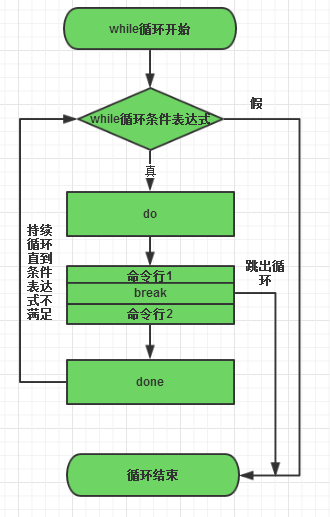
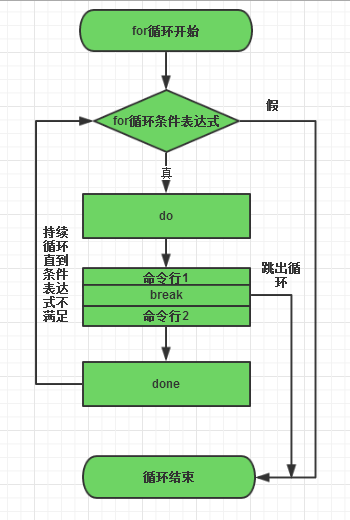
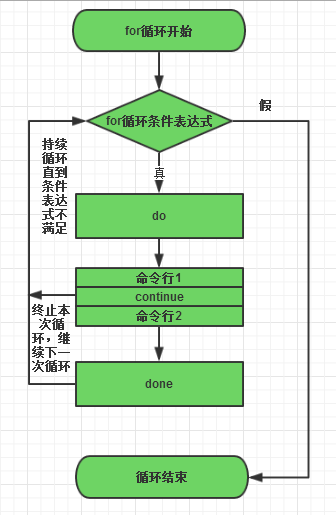
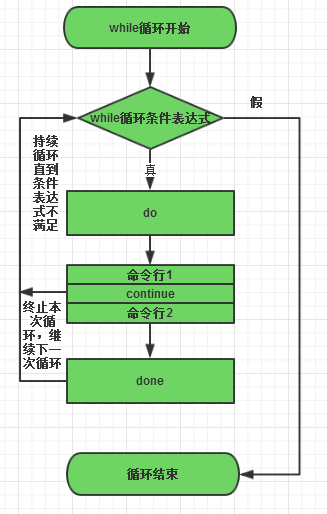
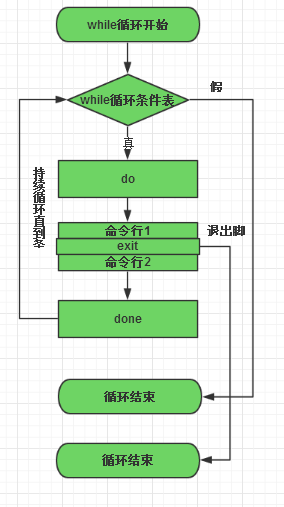
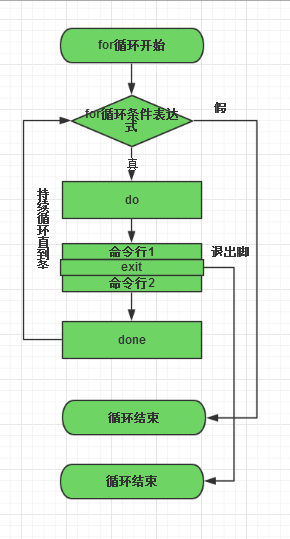
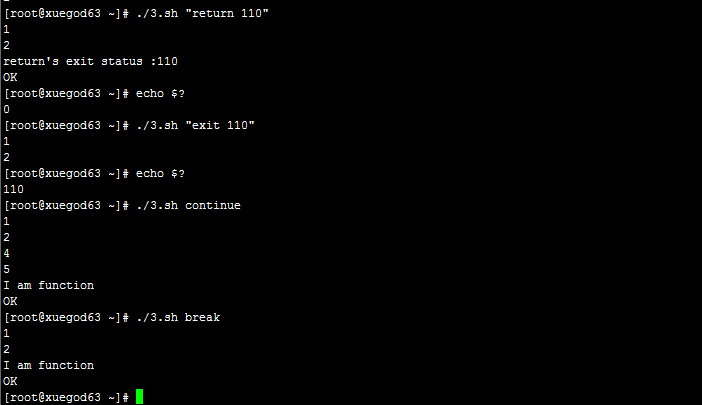
















 1226
1226

 被折叠的 条评论
为什么被折叠?
被折叠的 条评论
为什么被折叠?








